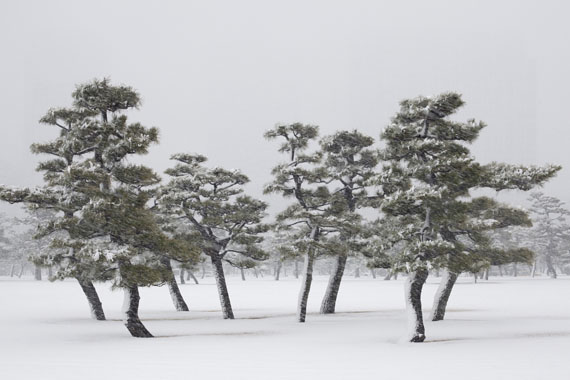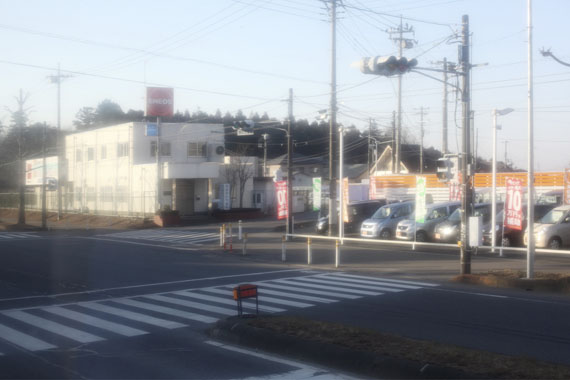
Jens Liebchen »
SYSTEM
Exhibition: 23 May – 29 Jul 2017
Sat 20 May 15:00 - 20:00

Galerie Springer Berlin
Fasanenstr. 13
10623 Berlin
+49 (0)30-3157220
office@galeriespringer.de
www.galeriespringer.de
Tue-Fri 12-18, Sa 12-15 +

Jens Liebchen
"SYSTEM"
Exhibition: 23 May - 29 July 2017
Opening reception: Saturday, 20 May, 3-8 pm
Artist Talk: 29 June, 7 p.m. with Dr. Matthias Harder curator of the Helmut Newton Foundation Berlin
For the first time, Galerie Springer Berlin is presenting the artist and photographer Jens Liebchen (*1970) and his "System" series. His photo book, published under the same title by Peperoni Books/White Press in 2014, was highly acclaimed by critics and sold out within only a short time. The gallery is therefore all the more fortunate to now be able to exhibit his large-sized works. Jens Liebchen studied Social Anthropology at Freie Universität Berlin before turning his attention entirely to photography. In his works, he deals with political and social issues. His time spent living in Tokyo, from 2010 until 2013, provided him with a reflective insight into Japanese society and culture.
While in Tokyo and at the heart of the metropolis, he produced his "System" series. In the outer part of the Imperial Palace Garden, Liebchen photographed pine trees during a blizzard. In Photonews Blogbuch, Michael Klein and Peter Lindhorst described the series as seeming similarly contemplative to the art of black-and-white oriental ink painting, which is practised in Japan to perfection”. What on first glance appears to be an arrangement of nature in an untouched environment is actually a setting right in the middle of the megacity Tokyo. Whereas in the background there is the suggestion of cars and parts of the city’s silhouette through the heavy blizzard, the lighting conditions clearly highlight the shapes and structures of the trees, making the colour photographs look almost as if they were black-and-white. The trees appear like protagonists on a stage: partly representing individual characters, partly seeming to be acting in groups. In November 2014, Hannes Wanderer wrote: "Nature only delivered the material for the trees. Position, growth, size and shape have been defined by people and designed down to the smallest detail".
For Jens Liebchen, the trees have an exemplary function. Shaped systematically, they thus correspond to social norms and in this sense cast a reflection on society as a whole. His book begins with the following text: "The tradition of tree shaping has come to assume an emblematic role in Japanese culture. Trees and shrubs in Japanese gardens are often drastically modified. Sculptors both control the location of trees and manipulate the growth of trunks, branches, and leaves. Little, if anything, is left to nature. The trees get cut, bent, buckled, diverted, redirected, and twisted into what is considered a perfect shape. In other words, they hold a mirror to a system meant to create individuals that invariably suit the needs of society". J.L.
In addition to the "System" series, the gallery is also exhibiting works from the "Tsukuba-Narita 2011/03/13" series. The series is Liebchen’s immediate artistic reaction to the earthquake-tsunami-reactor catastrophe in Japan in March 2011 and questions the medial truthfulness of images in the content of global news reporting. Almost like a road movie, the images present in chronological sequence the view from a bus window while travelling to Narita Airport outside of Tokyo. "I left Japan two days after the quake. The situation was unclear. Information from Japanese and Western media differed to a great extent. The bus to Narita left on time, as usual.".JL. In his essay, Christoph Schaden writes: "How are we read today? - the images ask in a hushed tone. How will you perceive us tomorrow? And what will be recognized in us? … Liebchen's 80 images have their origins in an artistic scepticism that even questions itself. In a virtuosic and complex manner their perception subverts a dilemma regarding a kind of recognition that will one day affect us too." The book with the same title was released by Spector Books in 2011.�

Jens Liebchen
"SYSTEM"
Ausstellung: 23. Mai bis 29. Juli 2017
Eröffnung: Samstag, 20. Mai, 15-20 Uhr
Artist Talk: 29. Juni, 19 Uhr
Matthias Harder, Kurator der Helmut Newton Stiftung Berlin spricht mit Jens Liebchen.
Zum ersten Mal präsentiert die Galerie Springer Berlin den Künstler und Fotografen Jens Liebchen (*1970) und seine Serie "System". Das im Jahr 2014 unter gleichem Titel bei Peperoni Books/White Press erschienene Fotobuch sorgte bei den Kritikern für große Begeisterung und war schon nach kurzer Zeit vergriffen. Um so glücklicher schätzt sich die Galerie, die Arbeiten nun großformatig zeigen zu können.
Jens Liebchen studierte Ethnologie an der Freien Universität Berlin bevor er sich ganz der Fotografie widmete. In seinen Arbeiten setzt er sich mit politischen und gesellschaftlichen Themen auseinander. Von 2010 bis 2013 lebte er in Tokio, was ihm einen reflektierten Einblick in die japanische Gesellschaft und Kultur ermöglichte.
Dort, im Zentrum der Metropole Tokios, entstand die Serie "System". Liebchen fotografierte im äußeren Teil des Imperial Palace Gardens Kiefern während eines Schneesturms. "Baumformationen" beschrieben Michael Klein und Peter Lindhorst im Photonews-Blogbuch die Serie "die ähnlich kontemplativ wirken wie die Schwarz-Weiß-Kunst der Tuschemalerei, die in Japan bis zur Vollendung praktiziert wird". Was auf den ersten Blick wie ein Arrangement der Natur in unberührter Umgebung erscheint ist tatsächlich ein Setting inmitten der Megacity Tokio. Durch das dichte Schneetreiben hindurch lassen sich im Hintergrund Autos und Teile der Stadtsilhouette erahnen, dabei stellen die Lichtverhältnisse die Formen und Strukturen der Bäume deutlich heraus und lassen die Farbfotografien fast wie Schwarz-Weiß Darstellungen erscheinen. Die Bäume wirken dabei wie Protagonisten auf einer Bühne, teils stellen sie einzelne Charaktere dar, teils wirken sie in Gruppen. Hannes Wanderer schrieb im November 2014: "Für die Bäume hat die Natur nur das Material geliefert. Platzierung, Wuchs, Größe und Form sind von Menschen definiert und bis ins kleinste Detail geplant."
Für Jens Liebchen haben die Bäume exemplarische Funktion. Sie werden systematisch geformt und entsprechen so gesellschaftlichen Normen. In diesem Sinne werfen sie einen Spiegel auf die Gesellschaft als Ganzes. Seinem Buch stellt er den folgenden Text voran: "The tradition of tree shaping has come to assume an emblematic role in Japanese culture. Trees and shrubs in Japanese gardens are often drastically modified. Sculptors both control the location of trees and manipulate the growth of trunks, branches, and leaves. Little, if anything, is left to nature. The trees get cut, bent, buckled, diverted, redirected, and twisted into what is considered a perfect shape. In other words, they hold a mirror to a system meant to create individuals that invariably suit the needs of society".
Ergänzend zu "System" zeigt die Galerie Arbeiten aus der Serie "Tsukuba-Narita 2011/03/13". Die Serie ist Liebchens unmittelbare künstlerische Reaktion auf die Erdbeben-Tsunami-Reaktorkatastrophe in Japan im März 2011 und hinterfragt den medialen Wahrheitsgehalt von Bildern im Kontext der globalen Berichterstattung. In chronologischer Abfolge in der Art eines Roadmovie zeigen die Bilder den Blick aus dem Fenster eines Busses auf der Fahrt zum Flughafen Narita außerhalb von Tokio. "I left Japan two days after the quake. The situation was unclear. Information from Japanese and Western media differed to a great extent. The bus to Narita left on time, as usual." Christoph Schaden schreibt in seinem Essay: "Wie werden wir heute gelesen?, fragen die Bilder. Wie werden wir morgen wahrgenommen? Und was wird in uns erkannt werden? ... Die 80 Bilder von Jens Liebchen verdanken sich einem künstlerischen Skeptizismus, der sich selbst nicht ausnimmt. Sie unterlaufen in der Anschauung auf virtuos vielschichtige Weise ein Dilemma des Erkennens, das uns auch zukünftig betreffen wird." Das gleichnamige Buch erschien 2011 bei Spector Books.�

